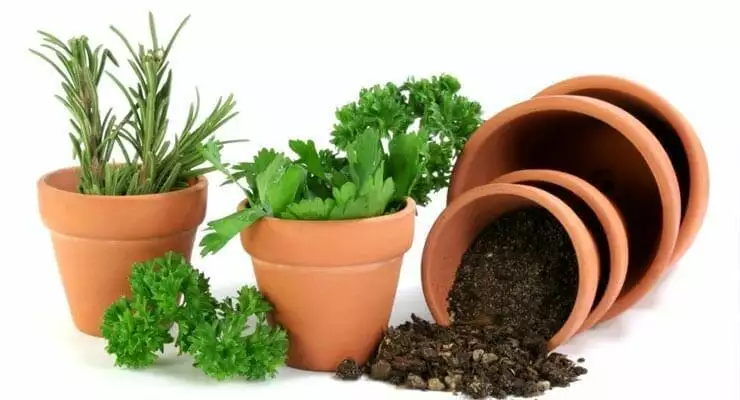Fresh herbs spice up your pizza, pasta and nearly any other meal you cook. Herbs at the supermarket are often expensive and there’s no guarantee of the freshness. An herb garden, either indoors or out, provides you with fresh herbs all summer long. If you choose an indoor herb garden, the fresh flavor and scent is available year-round. Start with a few herbs to get a feel for the process before expanding to other types.
Indoors
Step 1
Place an inch of gravel in the bottom of the pots to promote drainage. Add a ratio of two parts potting soil to one part perlite in the pots.
Step 2
Dig a hole in each pot to the depth suggested on the package for each type of herb. Place the seeds in the holes. Cover with the soil mixture and water the seeds.
Step 3
Place the herb pots near a window that allows long stretches of direct sunlight. Choose a south- or west-facing window for the best results.
Step 4
Water the plants on a regular basis. Mist the plants with water to avoid pushing the dirt around that sometimes occurs when pouring water in the pot.
Outdoors
Step 1
Mark off the area for your outdoor herb garden. Choose a location that receives direct sunlight at least six hours each day. Proper drainage is also key.
Step 2
Dig 8 to 12 inches into the soil to loosen the dirt within the marked garden area. Mix in compost or other organic matter to add nutrients to the soil.
Step 3
Install a garden border around the edge if desired. You can also build raised garden beds for your herb garden if you prefer.
Step 4
Set the herb seedlings outside in the container if you started them from seeds indoors. Start with a few hours outdoors and leave them out longer each day until they are out all day long. This process should take about a week and helps the plants adjust to the varying conditions outdoors.
Step 5
Dig holes in the prepared soil for each herb seedling or seed. Read package directions for each different type of herb to determine the amount of space necessary between plants.
Step 6
Water the herbs as needed based on rainfall patterns in your area. Avoid overwatering, which can damage the plants.





